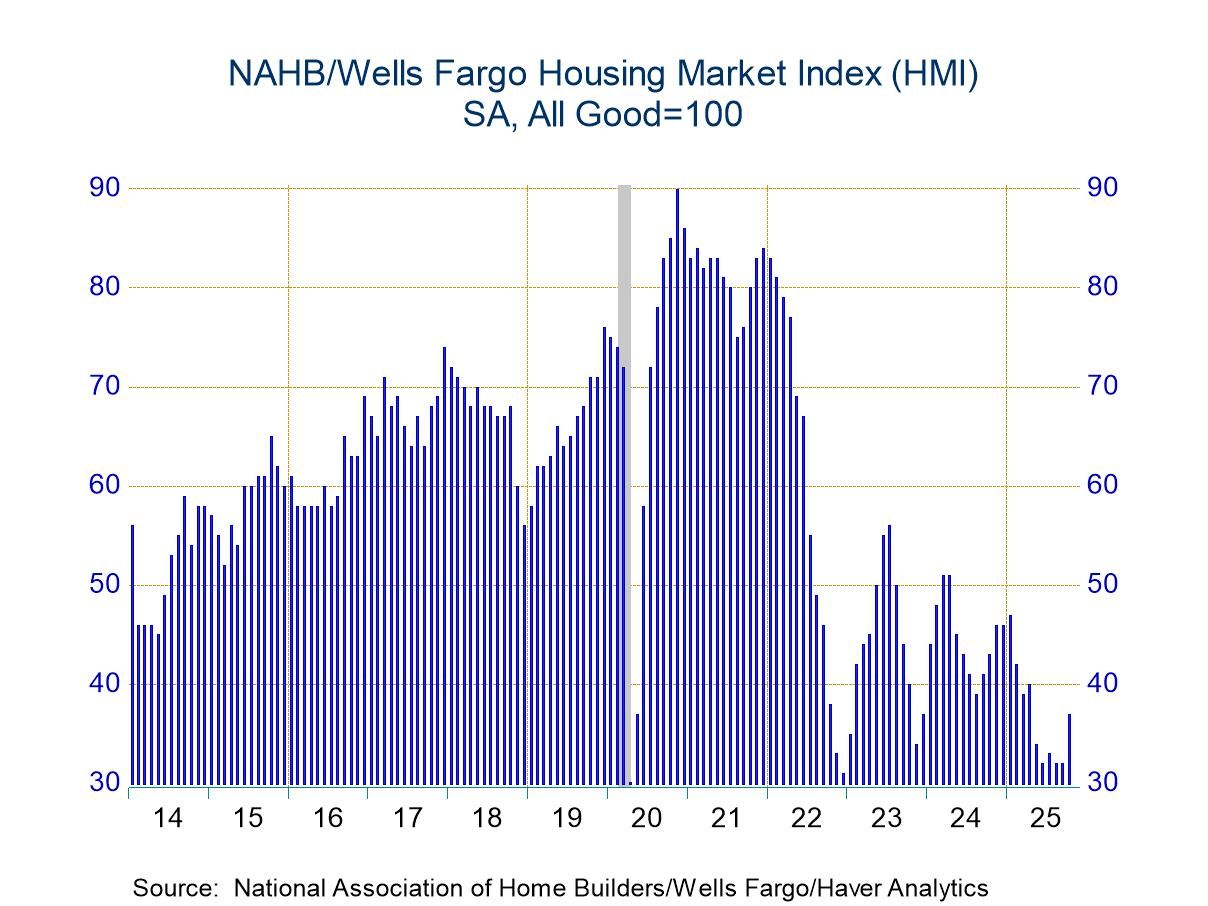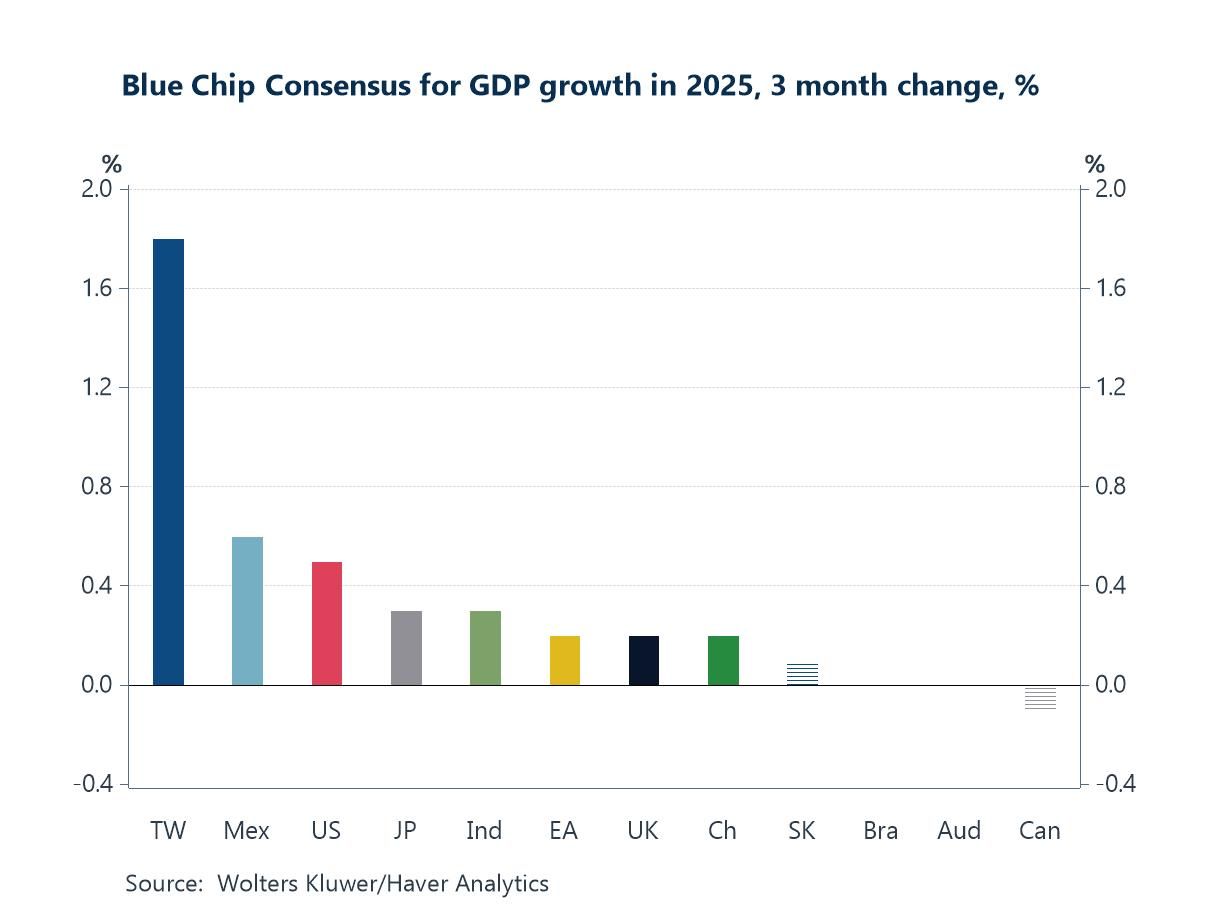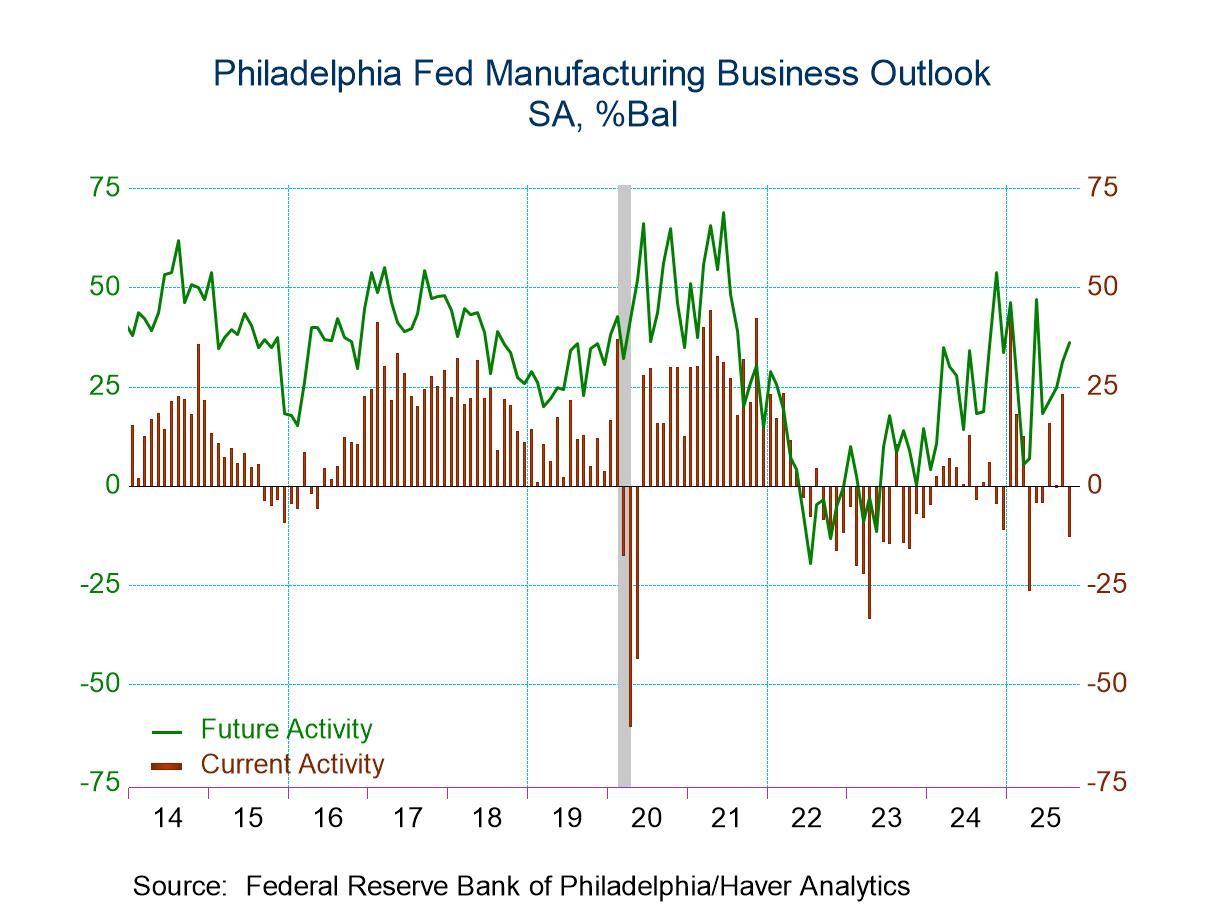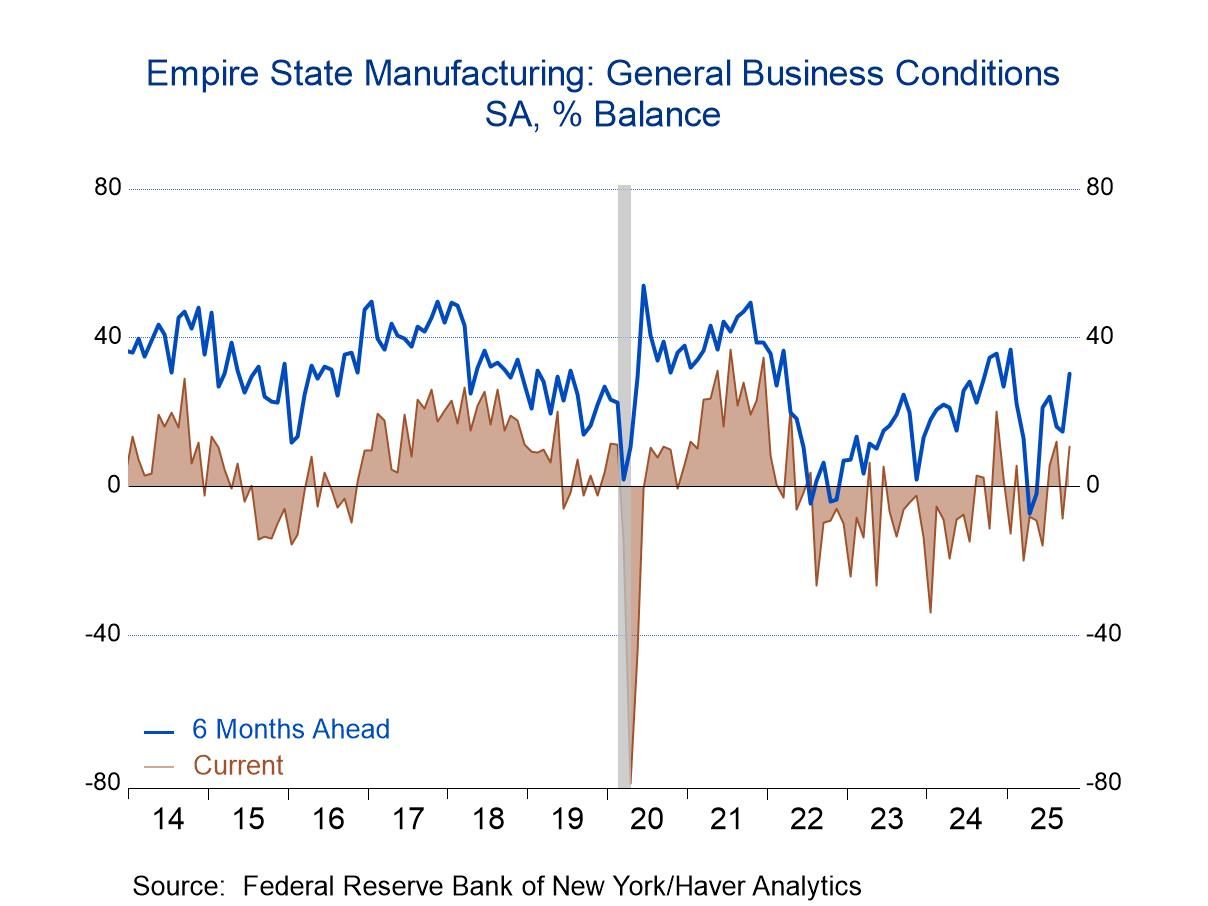 Global| Nov 04 2003
Global| Nov 04 2003U.S. Light Vehicle Sales Broadly Weak
by:Tom Moeller
|in:Economy in Brief
Summary
Light vehicle sales fell more than expected in October for the second consecutive month. Vehicle sales fell 6.5% m/m to 15.64M after falling 12.0% m/m in September from a two year high. Consensus expectations had been for sales of [...]
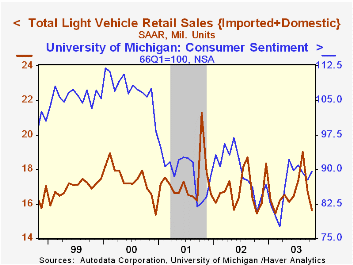
Light vehicle sales fell more than expected in October for the second consecutive month. Vehicle sales fell 6.5% m/m to 15.64M after falling 12.0% m/m in September from a two year high. Consensus expectations had been for sales of 16.5M.
Car sales fell hard, down 7.4% to 6.98M units. That was the lowest level of car sales since December of 1970.
Sales of light trucks slid for the second month, to 8.66M. That was down 5.7% to the lowest level since March.
Domestic light vehicle sales fell 6.2% to a 12.58M unit selling rate. Sales of cars fell to a near record low.
Imported vehicle sales also were weak, falling 7.4% m/m to the lowest sales rate in a year.
Imports captured 19.5% of the US market for new vehicles in October, the same share as last year.
| Light Vehicle Sales (SAAR, Mil.Units) | Oct | Sept | Y/Y | 2002 | 2001 | 2000 |
|---|---|---|---|---|---|---|
| Total | 15.64 | 16.72 | 1.2% | 16.81 | 17.26 | 17.40 |
| Autos | 6.98 | 7.54 | -4.2% | 8.07 | 8.48 | 8.83 |
| Light Trucks | 8.66 | 9.18 | 6.1% | 8.74 | 8.78 | 8.56 |
by Tom Moeller November 4, 2003
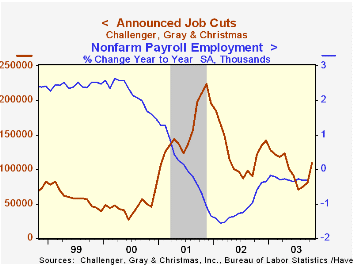
According to Challenger, Gray & Christmas, announced job cuts more than doubled in October versus September. In recent years, layoff announcements have similarly surged in October.
The three month moving average of job cut announcements jumped to the highest level since April.
Job cut announcements differ from layoffs in that many are achieved through attrition or just never occur.
During the last ten years there has been an 83% (inverse) correlation between the three month average level of announced job cuts and the y/y percent change payroll employment.
Job cut announcements surged m/m in the commodities (597.6% y/y), automotive (180.5% y/y), insurance (7.5% y/y), telecommunications (-37.8% y/y) and financial (-40.9% y/y) industries.
| Challenger, Gray & Christmas | Oct | Sept | Y/Y | 2002 | 2001 |
|---|---|---|---|---|---|
| Announced Job Cuts | 171,874 | 76,506 | -2.3% | 1,431,052 | 1,956,876 |
by Tom Moeller November 4, 2003
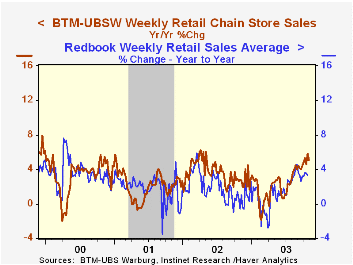
In the week ended November 1, chain store sales recovered 0.5% of the previous week's 0.9% drop according to the BTM-UBSW survey.
Despite the latest rise, sales for the full month of October fell 0.6% versus September. That followed a 0.8% m/m decline in September.
During the last five years there has been a 61% correlation between the year-to-year percent change in the BTM-UBSW measure of chain store sales and the change in non-auto retail sales less gasoline.
The BTM-UBSW retail chain-store sales index is constructed using the same-store sales reported by 78 stores of seven retailers: Dayton Hudson, Federated, Kmart, May, J.C. Penney, Sears and Wal-Mart.
| BTM-UBSW (SA, 1977=100) | 11/01/03 | 10/25/03 | Y/Y | 2002 | 2001 | 2000 |
|---|---|---|---|---|---|---|
| Total Weekly Retail Chain Store Sales | 420.3 | 418.4 | 5.1% | 3.6% | 2.1% | 3.4% |
Tom Moeller
AuthorMore in Author Profile »Prior to joining Haver Analytics in 2000, Mr. Moeller worked as the Economist at Chancellor Capital Management from 1985 to 1999. There, he developed comprehensive economic forecasts and interpreted economic data for equity and fixed income portfolio managers. Also at Chancellor, Mr. Moeller worked as an equity analyst and was responsible for researching and rating companies in the economically sensitive automobile and housing industries for investment in Chancellor’s equity portfolio. Prior to joining Chancellor, Mr. Moeller was an Economist at Citibank from 1979 to 1984. He also analyzed pricing behavior in the metals industry for the Council on Wage and Price Stability in Washington, D.C. In 1999, Mr. Moeller received the award for most accurate forecast from the Forecasters' Club of New York. From 1990 to 1992 he was President of the New York Association for Business Economists. Mr. Moeller earned an M.B.A. in Finance from Fordham University, where he graduated in 1987. He holds a Bachelor of Arts in Economics from George Washington University.



